Posted by James (admin) on 17th September 2010
 Zombie Dice is a dice-rolling, push-your-luck game where players are zombies trying to be the first to eat 13 brains. The game consists purely of 13 special dice whose faces show either footprints, shotgun blasts or brains. The dice are one of 3 different dice types: The 6 green dice have more brains and few shotgun blasts, the 4 red dice have more shotgun blasts and fewer brains, and the 4 yellow dice are in between the two.
Zombie Dice is a dice-rolling, push-your-luck game where players are zombies trying to be the first to eat 13 brains. The game consists purely of 13 special dice whose faces show either footprints, shotgun blasts or brains. The dice are one of 3 different dice types: The 6 green dice have more brains and few shotgun blasts, the 4 red dice have more shotgun blasts and fewer brains, and the 4 yellow dice are in between the two.
On their turn, a player takes 3 dice at random from the card tube and rolls them. Any shotgun blast and brain results are set aside. If the player has any footstep dice remaining they can take more dice at random from the tube to make a total of 3 dice and roll again. The player can stop at any time and the amount of brains they have accumulated is added to their score. If a player has no footstep results (i.e. they just roll brains and blasts), then their turn automatically ends. However, if the player ever has 3 shotgun blasts then their turn is over and they lose any brains they rolled during that turn. First player to eat 13 brains wins. Read the rest of this entry »
Tags: board game news, Board Games, board gaming, Zombie Dice
Posted in Board Game Review, Board Games | No Comments »
Posted by James (admin) on 15th September 2010
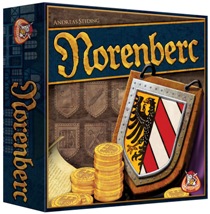 Norenberc is one of the three games coming from White Goblin at Essen. It caught my attention because it is designed by Andreas Steding who created Hansa Teutonica – a game that didn’t catch my attention enough at Spiel last year but I discovered afterwards that is was very good indeed.
Norenberc is one of the three games coming from White Goblin at Essen. It caught my attention because it is designed by Andreas Steding who created Hansa Teutonica – a game that didn’t catch my attention enough at Spiel last year but I discovered afterwards that is was very good indeed.
Norenberc is a worker placement game with some new ideas. Players commit to where they will be taking actions each game turn before simultaneously revealing their intentions. This sounds fun (Fresco did something similar) but there’s an extra twist: Each action requires a worker and if any players have workers left to place at the end of a game turn, then another game turn occurs until all players have used their workers. So, if you take lots of actions in one turn, you may have to wait a few more turns before everyone gets your workers back and you can perform actions again. Read the rest of this entry »
Tags: board game news, Board Games, board gaming, Essen, Hansa Teutonica, Norenberc, Spiel 10, Spiel 2010
Posted in Board Games, Essen Spiel 10, Norenberc, On the Radar | No Comments »
Posted by James (admin) on 15th September 2010
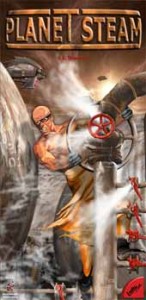 Planet steam is an economic/resource game that was released at Essen in 2008. It was a sought after item in an epic-sized box (like a FantasyFlight Games big box size). With a steampunk setting, players collect resources (water, ore, energy and quartz) from the available mine shafts in order to earn as much money as possible. This is a ‘Thoughts On’ piece rather than a review as Planet Steam is a very interwoven economic system and I don’t feel one play is enough for a full review.
Planet steam is an economic/resource game that was released at Essen in 2008. It was a sought after item in an epic-sized box (like a FantasyFlight Games big box size). With a steampunk setting, players collect resources (water, ore, energy and quartz) from the available mine shafts in order to earn as much money as possible. This is a ‘Thoughts On’ piece rather than a review as Planet Steam is a very interwoven economic system and I don’t feel one play is enough for a full review.
Players have a few starting resources and the basic carriers (which are the stores for each resource with limited capacity). Also, the board shows a grid of mine shafts. Each shaft can produce any resource depending upon what type of tank is placed on it. Each player has a few platforms already on the mine shaft grid which means they are the only ones that can add tanks in order to mine from that space. At the start of a round, players bid for characters which dictate turn order and give them a special power. Read the rest of this entry »
Tags: board game news, Board Games, board gaming, Essen, Planet Steam
Posted in Board Games, Planet Steam, Thoughts On | 1 Comment »
Posted by James (admin) on 11th September 2010
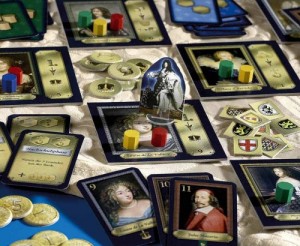 Louis XIV is mostly a worker placement game but it’s quite unusual. First of all, there’s no board; instead, there are 12 mini-boards laid out corner-to-corner in a square grid – this makes it easy to flip over any of the mini-boards but it also leaves spaces where various tokens get placed too. Over 4 rounds, players try to earn as many victory points as possible. Players can earn many VPs by fulfilling their mission cards which are completed by collecting the power chips shown on each card. There are 4 types of power chip as well as one type that counts as any type.
Louis XIV is mostly a worker placement game but it’s quite unusual. First of all, there’s no board; instead, there are 12 mini-boards laid out corner-to-corner in a square grid – this makes it easy to flip over any of the mini-boards but it also leaves spaces where various tokens get placed too. Over 4 rounds, players try to earn as many victory points as possible. Players can earn many VPs by fulfilling their mission cards which are completed by collecting the power chips shown on each card. There are 4 types of power chip as well as one type that counts as any type.
Each round, players receive 5 cards – each card corresponds to one of the 12 mini-boards. Each turn, players can play one of their cards and place up to 3 of their cubes (workers) from their supply onto the mini-board that matches their card. Also, they can move any of the newly placed cubes onto an adjoining mini-board so long as they leave at least one cube behind and do not spread in two different directions at once from the same mini-board. As players only have a limited amount of cubes, they can use their turn to add some cubes to their supply instead of placing. Players discard the last card left in their hand so usually get 4 turns. Read the rest of this entry »
Tags: board game news, Board Games, board gaming, Louis XIV
Posted in Board Game Review, Board Games, Louis XIV | No Comments »
Posted by James (admin) on 11th September 2010
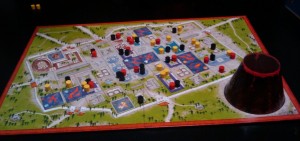 The Downfall of Pompeii is a light and fast game where players place their people in the buildings of Pompeii and then score points for each one that escapes the city after the volcano erupts. In the first phase of the game, players take turns playing building cards to place their people in the building that matches their card. Each building has a fixed number of spaces for people and, if a building is full, then the player can place their people in any building with spaces. When the AD79 card is drawn, the placement gets faster because if a person is placed in a building that already has occupants, the player adds that many extra people elsewhere on the board too. During this time, a player may draw an Omen card which means they get to throw one of their opponent’s people into the card volcano. Read the rest of this entry »
The Downfall of Pompeii is a light and fast game where players place their people in the buildings of Pompeii and then score points for each one that escapes the city after the volcano erupts. In the first phase of the game, players take turns playing building cards to place their people in the building that matches their card. Each building has a fixed number of spaces for people and, if a building is full, then the player can place their people in any building with spaces. When the AD79 card is drawn, the placement gets faster because if a person is placed in a building that already has occupants, the player adds that many extra people elsewhere on the board too. During this time, a player may draw an Omen card which means they get to throw one of their opponent’s people into the card volcano. Read the rest of this entry »
Tags: board game news, Board Games, board gaming, The Downfall of Pompeii
Posted in Board Game Review, Board Games, Downfall of Pompeii | No Comments »
Posted by James (admin) on 9th September 2010
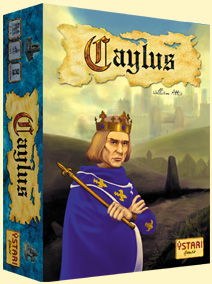 I had played Caylus: Magna Carta before (the smaller, card-based version of Caylus) but not the original big game so I was looking forwards to playing this.
I had played Caylus: Magna Carta before (the smaller, card-based version of Caylus) but not the original big game so I was looking forwards to playing this.
During the game, players place their workers on various buildings so they can generate resources and cash which they can then use to build further buildings and generate victory points. First, players take turns placing their workers on the available buildings. Only one player can use each building during a round, so timing your placement of your workers can be agonising (in a good way) because you always want to place your workers in multiple places at once (always a good sign in a worker placement game) before someone else does. When all players have passed, the buildings get resolved in order (moving along the road that leads out of the castle). Some buildings generate resources (food, wood, stone, cloth, gold), some generate cash, and some have special effects like allowing a player to build a new building, changing the turn order, allowing a player to buy a resource for cash, trade gold for victory points, and so on. Read the rest of this entry »
Tags: board game news, Board Games, board gaming, Caylus
Posted in Board Game Review, Board Games, Caylus | 2 Comments »
Posted by James (admin) on 8th September 2010
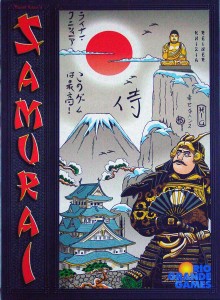 In Reiner Knizia’s classic game, players take turns placing hexagonal tiles from their hand onto a map of Japan where some of the hexes (villages, towns and cities) contain one or more of the 3 types of markers (helmets, rice fields, buddhas). When a location containing one or more markers is surrounded by tiles (sea areas don’t need to contain tiles), the tile strengths of each player are added up and the player with the greatest relevant strength wins the relevant marker. Many tiles’ strength only counts towards capturing one of the 3 types of markers but a few (like the Samurai) count towards all types.
In Reiner Knizia’s classic game, players take turns placing hexagonal tiles from their hand onto a map of Japan where some of the hexes (villages, towns and cities) contain one or more of the 3 types of markers (helmets, rice fields, buddhas). When a location containing one or more markers is surrounded by tiles (sea areas don’t need to contain tiles), the tile strengths of each player are added up and the player with the greatest relevant strength wins the relevant marker. Many tiles’ strength only counts towards capturing one of the 3 types of markers but a few (like the Samurai) count towards all types.
For example, a hex on the coast containing a Buddha maker has the following tiles around it: Red 2 buddha, Red 2 samurai, Yellow 4 helmet, Yellow 1 Samurai, Green 3 buddha. As the other hex around this location is a sea hex, the village is surrounded. In this case, Red wins the Buddha because they have a total of 4 towards capturing buddhas. Green’s total of 3 isn’t enough, and neither is Yellow’s total of 1 because their helmet tiles doesn’t count towards capturing buddhas.
Read the rest of this entry »
Tags: board game news, Board Games, board gaming, Knizia, Samurai
Posted in Board Game Review, Board Games, Samurai | 1 Comment »
Posted by James (admin) on 8th September 2010
Occasionally, a friend of mine runs an all-day boardgames tournament at the games shop (Eclectic Games) in Reading (UK) where anyone can turn up and play. The day consists of around 5 or 6 games each played with 3 or 4 players and the people in each group changes every game so you get to play with most people present. Saturday was the fourth of these tournament days (called BADGER which stands for Berskhire All-Day Gaming Extravaganza in Reading) and I got to play games that were mostly new to me.
The games I played were: Read the rest of this entry »
Tags: BADGER, board game news, Board Games, board gaming, Caylus, Eclectic Games, Il Principe, Louis XIV, Samurai, The Downfall of Pompeii
Posted in Board Games, Caylus, Downfall of Pompeii, Games Session, Il Principe, Louis XIV, Samurai | No Comments »
Posted by James (admin) on 28th August 2010
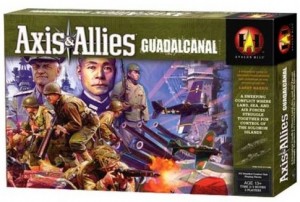 [Note: After posting this review, someone let me know that Hasbro issued some errata and the reinforcement points should have been twice as many, i.e. 10 + 4 per island. That would have made a big difference as we could have bought a lot more reinforcements. Hasbro’s web site says you can play it either way (with double reinforcement points or without) so this is a review of the game without that ammended rule as we played it using the rules as stated in the box. Please keep this in mind when you read the review and I’ll comment more on it at the end.]
[Note: After posting this review, someone let me know that Hasbro issued some errata and the reinforcement points should have been twice as many, i.e. 10 + 4 per island. That would have made a big difference as we could have bought a lot more reinforcements. Hasbro’s web site says you can play it either way (with double reinforcement points or without) so this is a review of the game without that ammended rule as we played it using the rules as stated in the box. Please keep this in mind when you read the review and I’ll comment more on it at the end.]
Axis & Allies: Guadalcanal is one of the three 2-player Axis & Allies games – the others being D-Day and Battle of the Bulge. Each game has completely different rules to the others and all have different rules compared to the main Axis & Allies game too. Earlier this year, my friend Matt and I decided to start playing some games that are connected to their anniversaries so we played A&A: D-Day on June 6th. As I like A&A: D-Day and Battle of the Bulge, I picked up a second-hand copy of Guadalcanal to play in August (anniversary of the start of the Guadalcanal conflict).
The Guadalcanal conflict was a series of battles during World War II which lasted many months where both sides fought over a group of tactically important islands in the Pacific. So, the board shows 6 main islands (land zones) and the sea around them is segmented into zones, plus players have a home base zone each too. Both players have land forces (infantry, artillery, anti-air), air forces (fighters, bombers) and sea forces (transports, destroyers, cruisers, submarines, aircraft carriers, battleships). The islands have spaces on them where one or two airfields can be built. Read the rest of this entry »
Tags: board game news, Board Games, board gaming
Posted in Axis & Allies: Guadalcanal, Board Game Review, Board Games | 6 Comments »
Posted by James (admin) on 27th August 2010
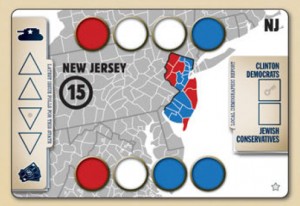 Campaign Manager 2008 is a card-driven game recreating the Presidential Election between Obama and McCain. The designers of the game are well-known for Twilight Struggle and 1960: Making of the President – both are card driven strategy games and Twilight Struggle is ranked the number 3 best board game of all – so the game was highly anticipated.
Campaign Manager 2008 is a card-driven game recreating the Presidential Election between Obama and McCain. The designers of the game are well-known for Twilight Struggle and 1960: Making of the President – both are card driven strategy games and Twilight Struggle is ranked the number 3 best board game of all – so the game was highly anticipated.
The game primarily consists of 45 cards for each player, a deck of Breaking News cards, a mini-board for each state. Players aim to win the electoral votes of each state and be the first player to gain 270+ votes. During the game, 4 states boards are laid between the players which are the ones the players are currently campaigning (fighting) over to win. Each state has a track showing whether economy or defence is currently the important issue to its voters, and each state has two demographic groups printed on them with a marker showing which is currently the most influential group in that state. Read the rest of this entry »
Tags: board game news, Board Games, Spiel 09
Posted in Board Game Review, Board Games, Campaign Manager 2008 | No Comments »
 Zombie Dice is a dice-rolling, push-your-luck game where players are zombies trying to be the first to eat 13 brains. The game consists purely of 13 special dice whose faces show either footprints, shotgun blasts or brains. The dice are one of 3 different dice types: The 6 green dice have more brains and few shotgun blasts, the 4 red dice have more shotgun blasts and fewer brains, and the 4 yellow dice are in between the two.
Zombie Dice is a dice-rolling, push-your-luck game where players are zombies trying to be the first to eat 13 brains. The game consists purely of 13 special dice whose faces show either footprints, shotgun blasts or brains. The dice are one of 3 different dice types: The 6 green dice have more brains and few shotgun blasts, the 4 red dice have more shotgun blasts and fewer brains, and the 4 yellow dice are in between the two.








